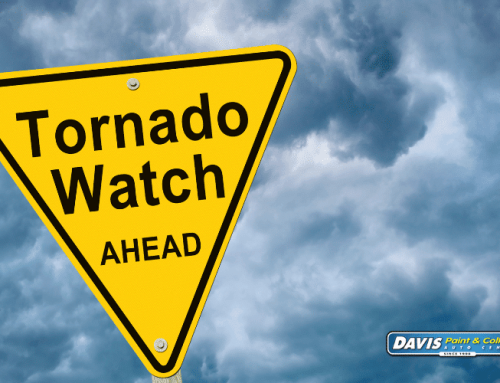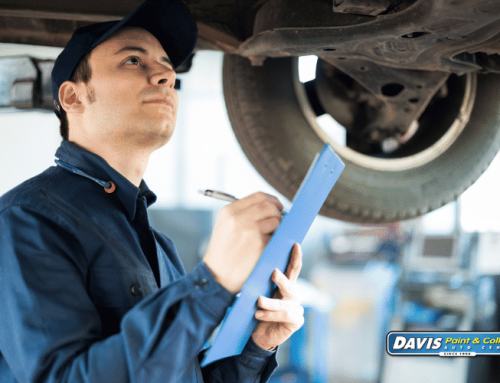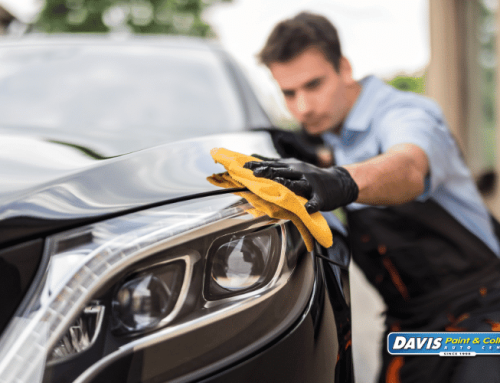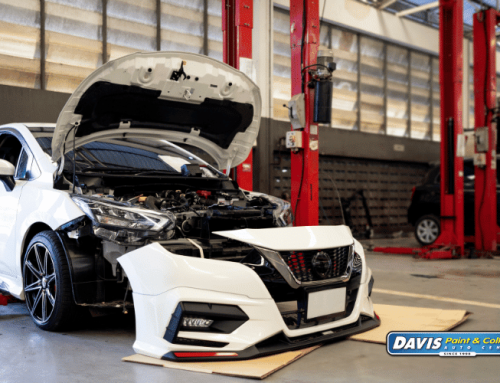The world of auto collision repairs can often seem like a labyrinth, with insurance coverage serving as a guiding thread through the maze. After a car accident, insurance becomes a crucial player in mitigating the financial burden of repairs, and understanding the nuances of your coverage is paramount.
Many drivers only realize the fine print of their coverage once they’re already facing unexpected costs or delays. Being proactive by reviewing your insurance details ahead of time can make a significant difference, helping you feel prepared rather than overwhelmed when something goes wrong. The right plan not only supports the repair process but also offers reassurance that you’re financially protected during one of the most stressful moments of car ownership.
Taking the time to explore your coverage options helps you make informed decisions that truly match your needs. Comparing insurance quotes from SimplyQuote provides a clearer view of how different providers measure up in terms of benefits, excess amounts, and affordability. This simple step can reveal valuable opportunities to strengthen your protection or reduce your costs without compromising on quality. By understanding the variety of options available, you’re better equipped to select a policy that fits your driving habits and budget, giving you confidence that your vehicle—and your peace of mind—are both well safeguarded.
Imagine this scenario: you’re driving along, minding your own business, when an unexpected collision occurs. Suddenly, you find yourself in need of repairs to restore your vehicle to its pre-accident condition. This is where your insurance policy steps in, providing a safety net that can significantly ease the financial strain. But navigating the world of insurance can be complex, with different types of coverage, deductibles, and claim processes to consider. So, whether you’re a seasoned driver or a newcomer to the road, it’s crucial to grasp the ins and outs of your insurance coverage to ensure a smooth and hassle-free experience when it comes to collision repairs. In the following sections, we’ll break down the key elements of auto insurance, empowering you to make informed decisions and maximize the benefits when the unexpected happens.
Types of Insurance Coverage
In the realm of auto insurance, there isn’t a one-size-fits-all policy. Coverage options vary, and understanding what’s available to you is the first step in comprehending your insurance coverage for auto collision repairs. Here, we’ll explore the different types of insurance coverage you may encounter:
- Liability Insurance: Liability insurance is often the foundational coverage required by law in most places. It helps cover damages and injuries to others if you’re found at fault in an accident. However, it typically does not cover repairs to your own vehicle.
- Collision Insurance: This coverage is designed specifically for repairs to your vehicle resulting from a collision with another vehicle or object, regardless of fault. Collision insurance can be invaluable in ensuring your vehicle’s restoration after an accident.
- Comprehensive Insurance: Comprehensive coverage goes beyond collision-related damage and covers a range of non-collision incidents, such as theft, vandalism, natural disasters, or contact with animals. It’s a comprehensive safety net for various unexpected events.
- Uninsured/Underinsured Motorist Coverage: In case you’re involved in an accident with a driver who lacks insurance or carries insufficient coverage, this type of insurance helps cover your expenses, including collision repairs, when the responsible party cannot.
- Medical Payments (MedPay) and Personal Injury Protection (PIP): These coverage types help pay for medical expenses, including those related to injuries sustained in an accident. While not directly tied to vehicle repairs, they can alleviate the overall financial burden after a collision.
Minimum Requirements and Optional Coverage
Now that we’ve explored the various types of insurance coverage, it’s crucial to delve into the minimum requirements mandated by law and the optional coverage types you can consider to enhance your protection:
- Minimum Requirements: Most regions have specific legal requirements for auto insurance coverage. These typically include liability insurance, which is designed to cover damages and injuries to others if you’re at fault in an accident. It’s essential to be aware of your local minimum insurance requirements, as failing to meet these can result in legal penalties and potential financial liabilities in the event of an accident.
- Optional Coverage: Beyond the minimum requirements, insurance providers offer a range of optional coverage types that can provide additional protection for collision repairs and other unexpected incidents. These optional coverages can include collision insurance, comprehensive insurance, uninsured/underinsured motorist coverage, and more. While optional coverage may increase your insurance premiums, it can also significantly enhance your financial security and peace of mind.
Deductibles and Premiums
As you navigate the intricacies of your insurance coverage for auto collision repairs, two key factors come into play: deductibles and premiums. These financial elements are essential to understanding how your insurance works:
- Deductibles: A deductible is the amount you’re responsible for paying out of pocket before your insurance coverage kicks in. For example, if your policy has a $500 deductible and your repair bill amounts to $2,000, you would pay the initial $500, and your insurance would cover the remaining $1,500. Deductibles serve as a cost-sharing mechanism between you and your insurer.
- Choosing a Deductible: Insurance policies often allow policyholders to select their deductible amount. Higher deductibles typically result in lower monthly premiums but require a larger upfront payment in the event of a claim. Lower deductibles mean higher monthly premiums but a reduced immediate financial burden during a claim.
- Premiums: Your insurance premium is the regular payment you make to maintain coverage. It’s typically paid monthly or annually and is influenced by various factors, including your coverage choices, driving history, age, and location. Premiums are essential to maintaining your insurance policy and ensuring that coverage is available when needed.
- Impact of Claims on Premiums: It’s worth noting that filing an insurance claim, especially for at-fault accidents, can result in increased premiums. Insurance companies may view policyholders who frequently file claims as higher-risk, which can lead to premium hikes.
Conclusion
At Davis Paint & Collision, we understand that the aftermath of an accident can be stressful, and dealing with insurance companies may seem daunting. That’s why we’re committed to making the process as straightforward and hassle-free as possible for our customers. We work alongside you, assisting with the claims process, providing accurate assessments, and ensuring that your collision repairs proceed smoothly.
When you choose Davis Paint & Collision for your auto collision repairs, you’re not just selecting a top-tier repair shop; you’re gaining a dedicated partner who will stand by your side, advocating for your needs and ensuring that your vehicle is restored to its pre-accident condition. Don’t let the complexities of insurance claims deter you from timely and effective collision repairs. Contact Davis Paint & Collision today, and experience the difference of having experts in your corner to make the process easier and more convenient for you. Your satisfaction and peace of mind are our priorities, every step of the way.







